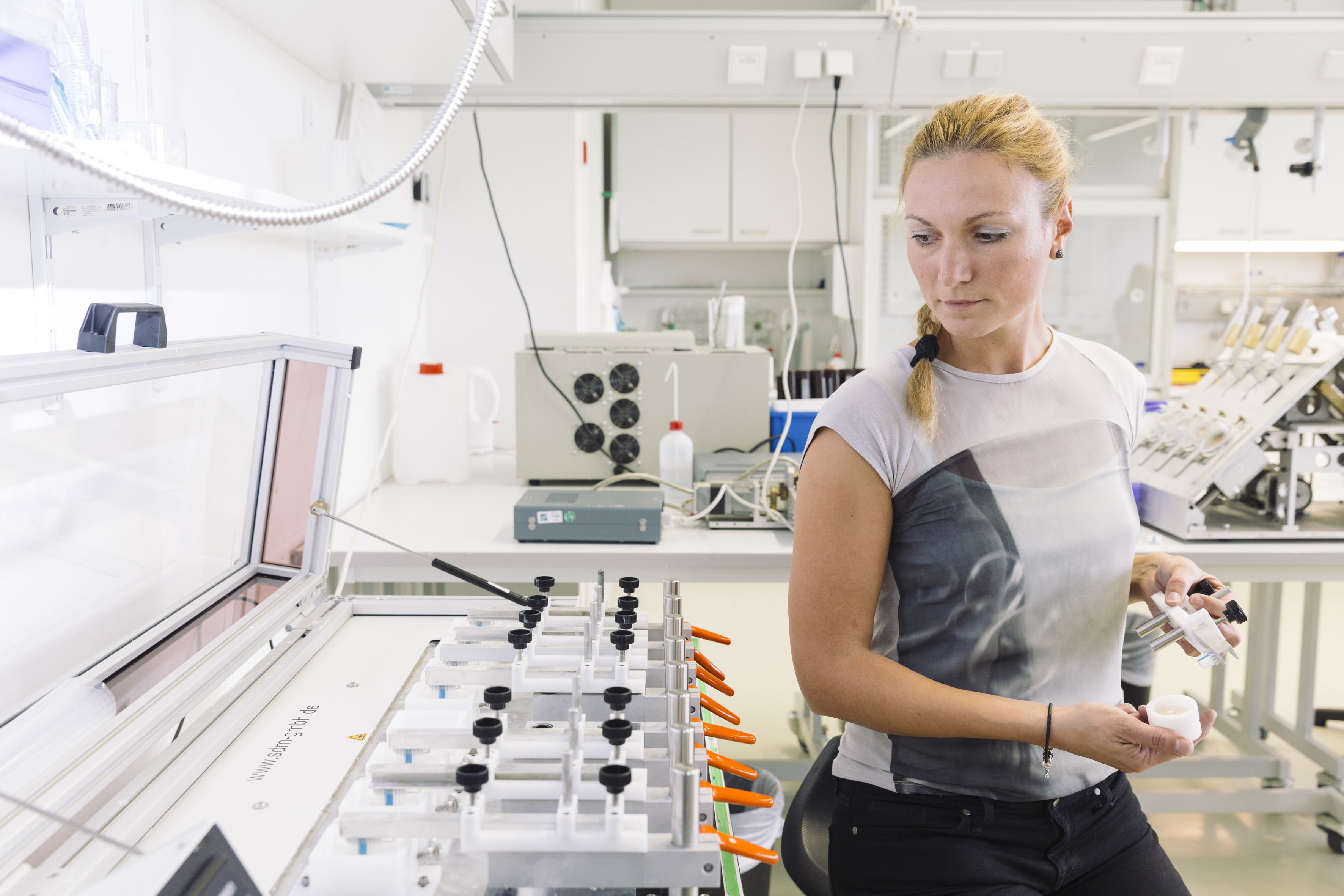
Elaborate clinical trials examine whether a cream is hypoallergenic, toothpaste strengthens or damages dental enamel and a shampoo improves hair structure. Material mechanics investigations at the Fraunhofer IMWS enable such questions to be answered in advance.
Elucidating mechanisms in microstructures is a traditional expertise of the Fraunhofer IMWS – for example, when it comes to characterizing new microelectronics materials. The research group headed by Dr Andreas Kiesow has already frequently answered questions concerning the mechanics of materials in oral and dental hygiene: Whether and how fluoridated toothpastes affect teeth? What is the microstructure of teeth, dental prostheses or even grinding teeth guards in use like, before and after care and cleaning?
The cleaning processes, for example, the interaction of bristle tips, teeth or prosthesis and the cleaning medium, can be analyzed at micro level, where tiny friction processes take place. Elucidating these mechanisms, emphasizes Dr. Andreas Kiesow, offers new opportunities for medicine and the cosmetics industry, not only in the dental field but also for hair, nails and skin. The first cosmetic manufacturers have already joined in: Highly sensitive chemical surface analysis can be used, for example, to determine whether and how active ingredients from a shampoo are deposited in hair.
Special equipment at the Fraunhofer IMWS enables the interactions between creams and tissue or a brushing process with treated and untreated hair to be simulated. Natural tissue samples can be analyzed in the so-called »environmental scanning electron microscope«. »The very graphic information from the electron microscope can also help to further elucidate the modes of action still further and to optimize the quality of a care or hygiene product«, said Kiesow.